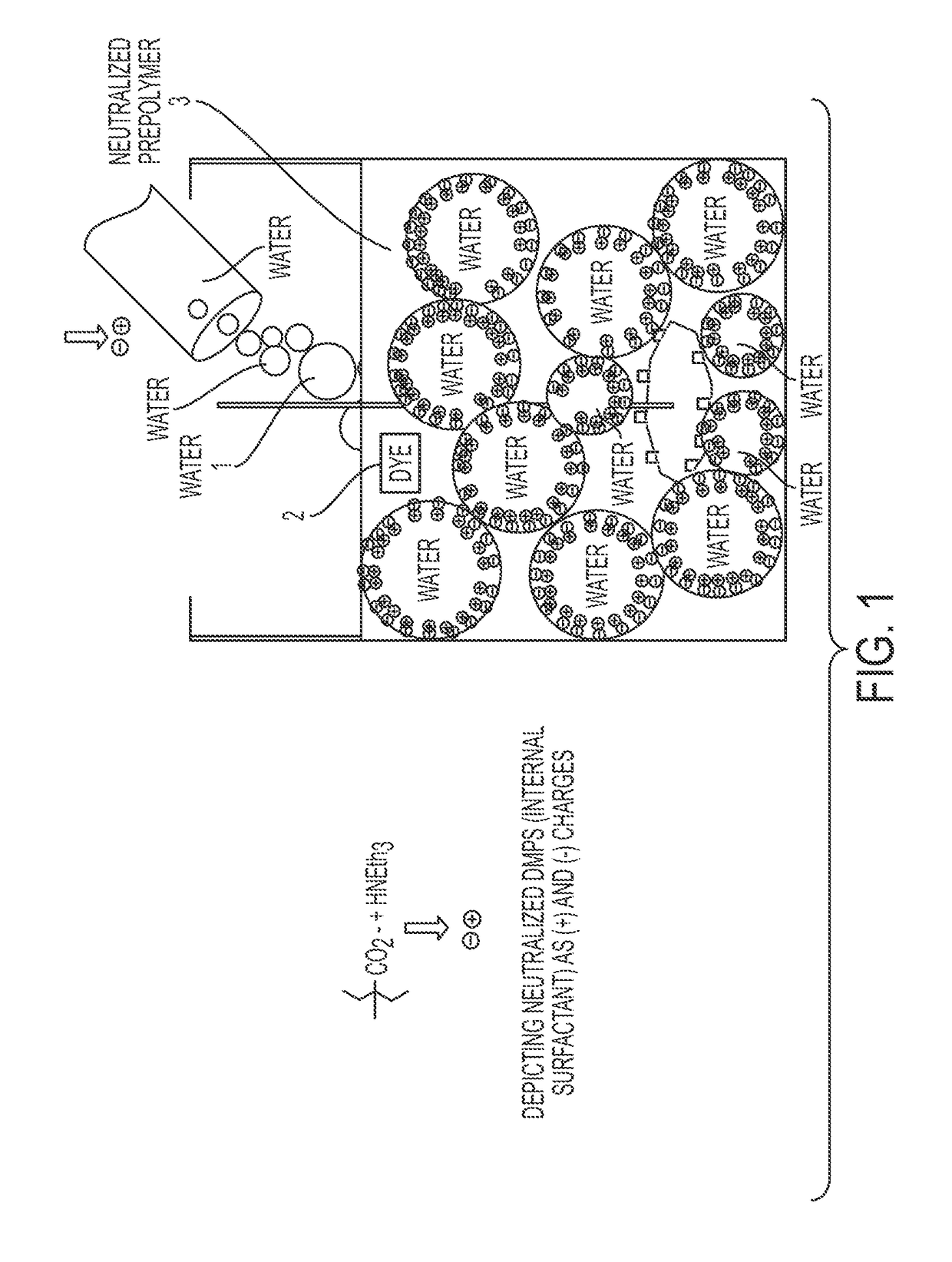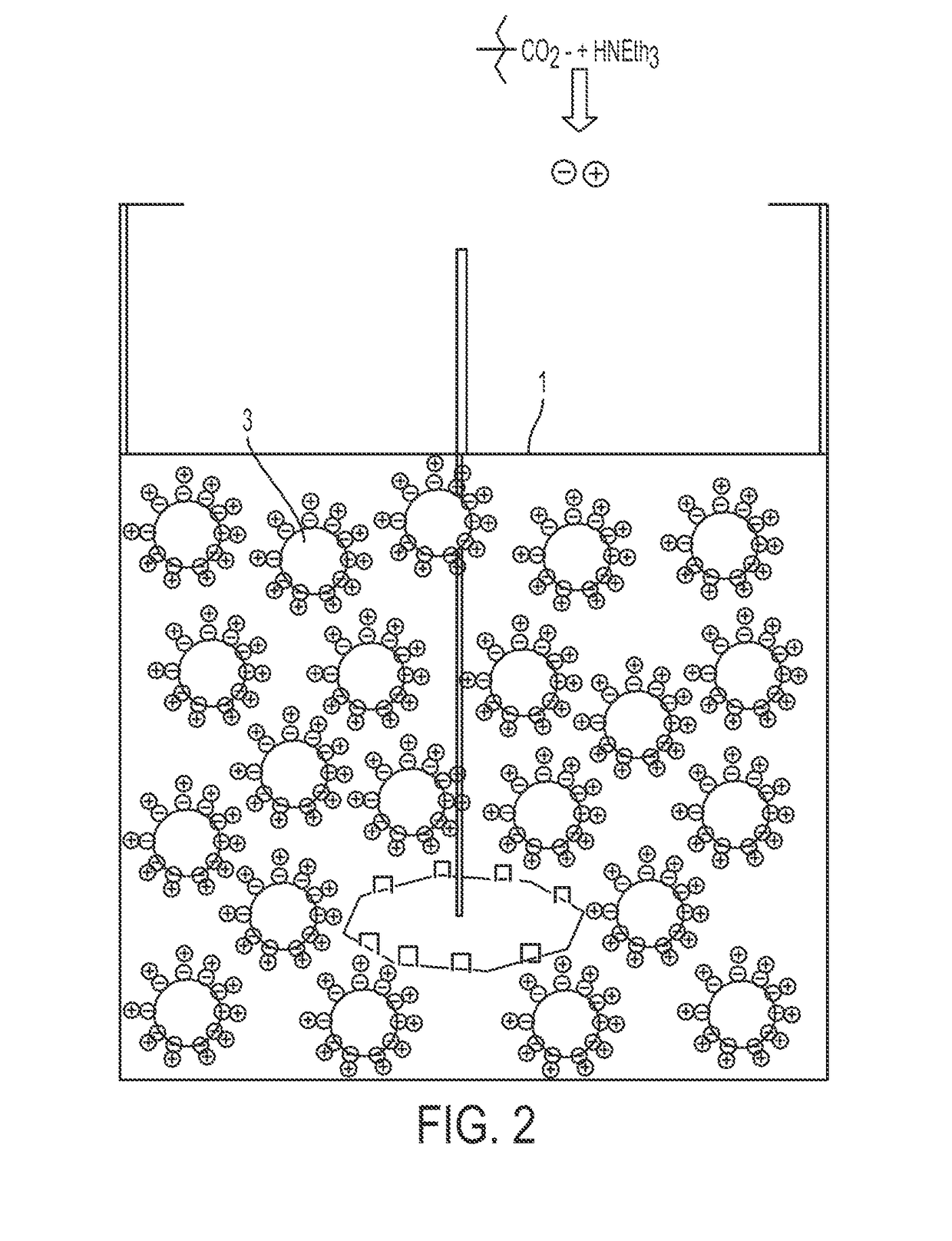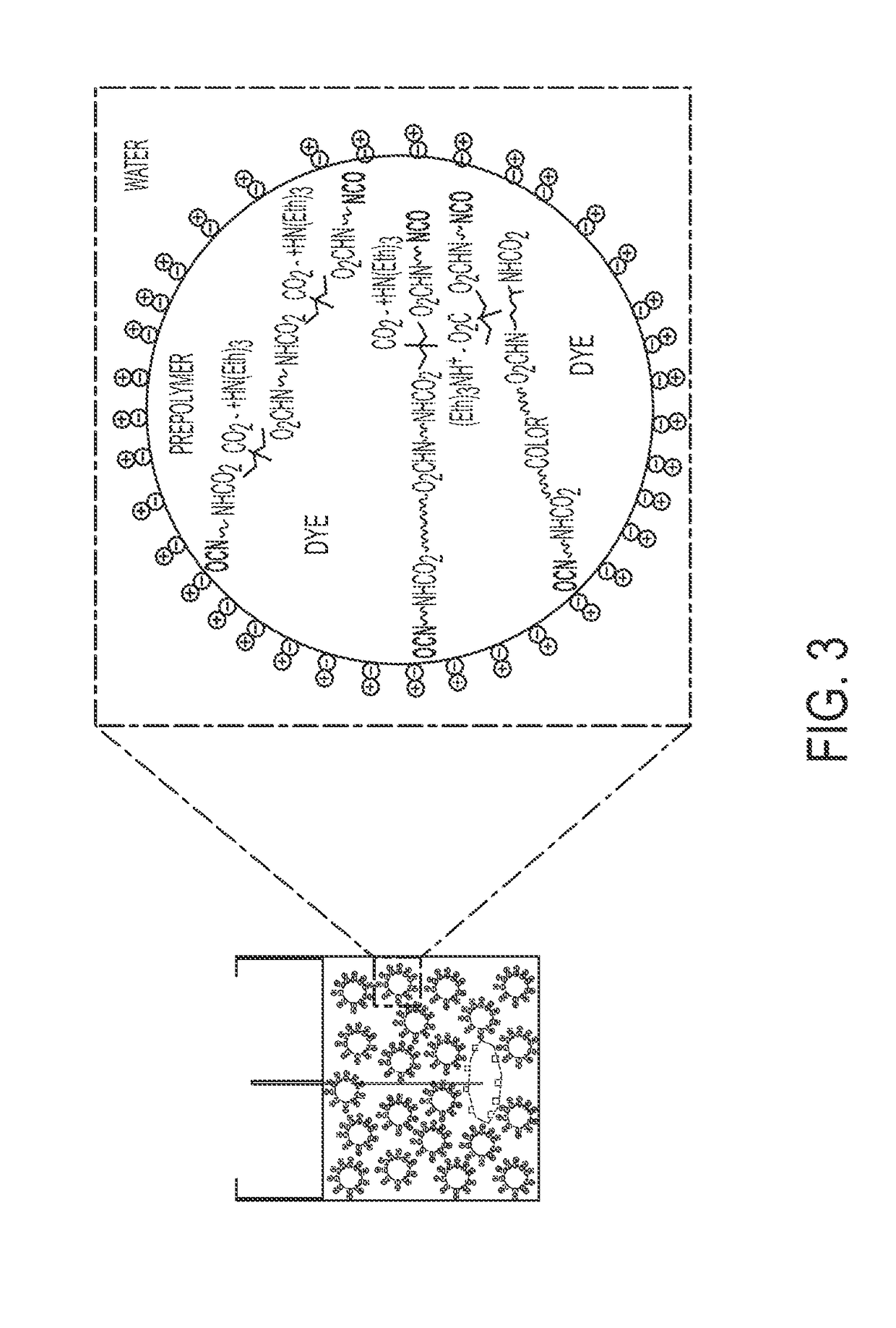Encapsulated titanium dioxide, fluorescent pigments, and pigmented polyurethane dispersion
a technology of fluorescent pigments and titanium dioxide, which is applied in the direction of polyurea/polyurethane coatings, coatings, inks, etc., can solve the problems of phosphorescent pigments that are not stable, encapsulated or incorporated, and their color is subsequently destroyed,
- Summary
- Abstract
- Description
- Claims
- Application Information
AI Technical Summary
Problems solved by technology
Method used
Image
Examples
example 1
Preparation of Neutralized Pigmented Pre-Polymer
[0050]Pre-dissolved DMPA / NMP solution:
[0051]Into a 50 ml flask equipped with a Teflon coated stir magnetic was added 9.75 g of 2,2-bis(hydroxymethyl) propionic acid (DMPA, MW=134, available from Adrich Chemical of Milwaukee, Wis.) and 15.64 g of N-methylpyrrolidone (NMP). The mixture was heated at 70° C. with stirring until the DMPA was completely dissolved.
[0052]Pre-Polymer Formation:
[0053]Into a 1 L kettle equipped with a Trubore stirrer and Teflon stir paddle, temperature controller, 100 mL constant pressure addition funnel and N2 inlet was charged 72.76 g pre-melted Terathane® 2000 (average Mn=2000 poly(tetrahydrofuran), available from Sigma-Aldrich). The kettle was secured in a bracket and the bottom ⅓ of the kettle was submerged in a 70° C. oil bath, and the contents were stirred for 15 minutes. The pre-dissolved DMPA / NMP solution was added to the kettle. After the contents were stirred for about 15 minutes, 42.4 g of isopherone ...
example 1a
[0054]The resulting mixture was added 3.0 g of Corona Magenta Pigment Sample A-21 [Day-Glo magenta] from the Day-Glo Color Corp and stirred for several minutes, followed by addition of about 7.35 g of triethylamine (MW=101) with continuous stirring and heating at 70° C. After stirring and heating for about 15 minutes the neutralized pre-polymer was ready to be dispersion. The kettle containing the neutralized pigmented pre-polymer was transferred to the dispersing apparatus with the dispersion blade about 0.25 inch below the surface of the neutralized pre-polymer.
example 1b
[0055]The resulting mixture was added 7.35 g of triethylamine, followed by 7.6 g of solid titanium dioxide (TiO2, anatase, nanopowder, 15 nm APS, from Nanostructured & Amorphous Material, Inc.) with continuous stirring and heating at 70° C. After stirring and heating for about 15 minutes the neutralized pre-polymer was ready to be dispersion. The kettle containing the neutralized pigmented pre-polymer was transferred to the dispersing apparatus with the dispersion blade about 0.25 inch below the surface of the neutralized pre-polymer.
PUM
| Property | Measurement | Unit |
|---|---|---|
| surface tension | aaaaa | aaaaa |
| molar ratio | aaaaa | aaaaa |
| molar ratio | aaaaa | aaaaa |
Abstract
Description
Claims
Application Information
 Login to View More
Login to View More - R&D
- Intellectual Property
- Life Sciences
- Materials
- Tech Scout
- Unparalleled Data Quality
- Higher Quality Content
- 60% Fewer Hallucinations
Browse by: Latest US Patents, China's latest patents, Technical Efficacy Thesaurus, Application Domain, Technology Topic, Popular Technical Reports.
© 2025 PatSnap. All rights reserved.Legal|Privacy policy|Modern Slavery Act Transparency Statement|Sitemap|About US| Contact US: help@patsnap.com



